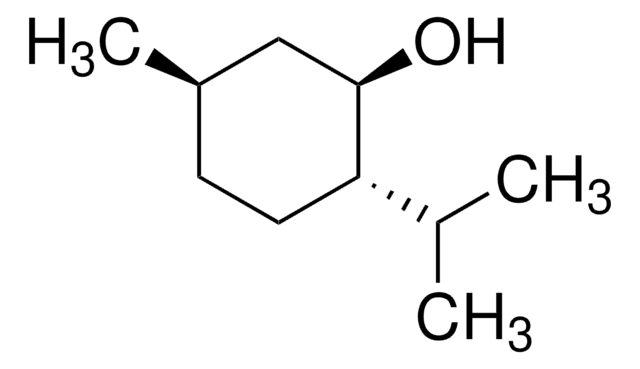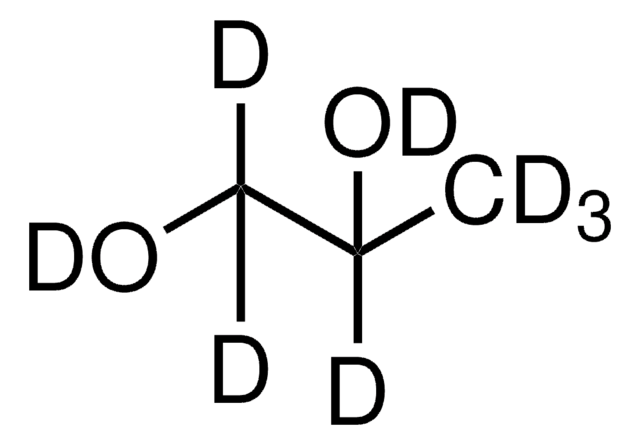PHR1045
Dietilenglicole
Pharmaceutical Secondary Standard; Certified Reference Material
Sinonimo/i:
2,2′-ossidietanolo, 2-idrossietil etere, Bis(2-idrossietil) etere, Diglicole
About This Item
Prodotti consigliati
Grado
certified reference material
pharmaceutical secondary standard
Livello qualitativo
agenzia
traceable to Ph. Eur. Y0000217
traceable to USP 1193265
Densità del vapore
2.14 (vs air)
Tensione di vapore
0.01 mmHg ( 20 °C)
Famiglia di API
diethylene glycol
CdA
current certificate can be downloaded
Temp. autoaccensione
442 °F
Limite di esplosione
2-12.3 %
tecniche
HPLC: suitable
gas chromatography (GC): suitable
Indice di rifrazione
n20/D 1.447 (lit.)
P. eboll.
245 °C (lit.)
Punto di fusione
−10 °C (lit.)
Densità
1.118 g/mL at 25 °C (lit.)
applicazioni
cleaning products
cosmetics
food and beverages
personal care
pharmaceutical (small molecule)
Formato
neat
Temperatura di conservazione
2-30°C
Stringa SMILE
OCCOCCO
InChI
1S/C4H10O3/c5-1-3-7-4-2-6/h5-6H,1-4H2
MTHSVFCYNBDYFN-UHFFFAOYSA-N
Cerchi prodotti simili? Visita Guida al confronto tra prodotti
Descrizione generale
Diethylene glycol is a a four carbon dimer of ethylene glycol and finds applications as antifreeze, solvent, humectant, hydraulic fluid and brake fluid. It is a potential neuro- and nephrotoxin for humans. It may also be utilized in moisturizers, lubricants, emulsification agents, additives and solvents.
Applicazioni
Risultati analitici
Altre note
Nota a piè di pagina
Prodotti consigliati
Applicazioni
Prodotti correlati
Avvertenze
Warning
Indicazioni di pericolo
Consigli di prudenza
Classi di pericolo
Acute Tox. 4 Oral
Codice della classe di stoccaggio
10 - Combustible liquids
Classe di pericolosità dell'acqua (WGK)
WGK 1
Punto d’infiammabilità (°F)
280.4 °F - closed cup
Punto d’infiammabilità (°C)
138 °C - closed cup
Scegli una delle versioni più recenti:
Possiedi già questo prodotto?
I documenti relativi ai prodotti acquistati recentemente sono disponibili nell’Archivio dei documenti.
I clienti hanno visto anche
Protocolli
99%; Glycerol, ≥99.5%; Tetraethylene glycol, 99%
Chromatograms
suitable for GCIl team dei nostri ricercatori vanta grande esperienza in tutte le aree della ricerca quali Life Science, scienza dei materiali, sintesi chimica, cromatografia, discipline analitiche, ecc..
Contatta l'Assistenza Tecnica.










